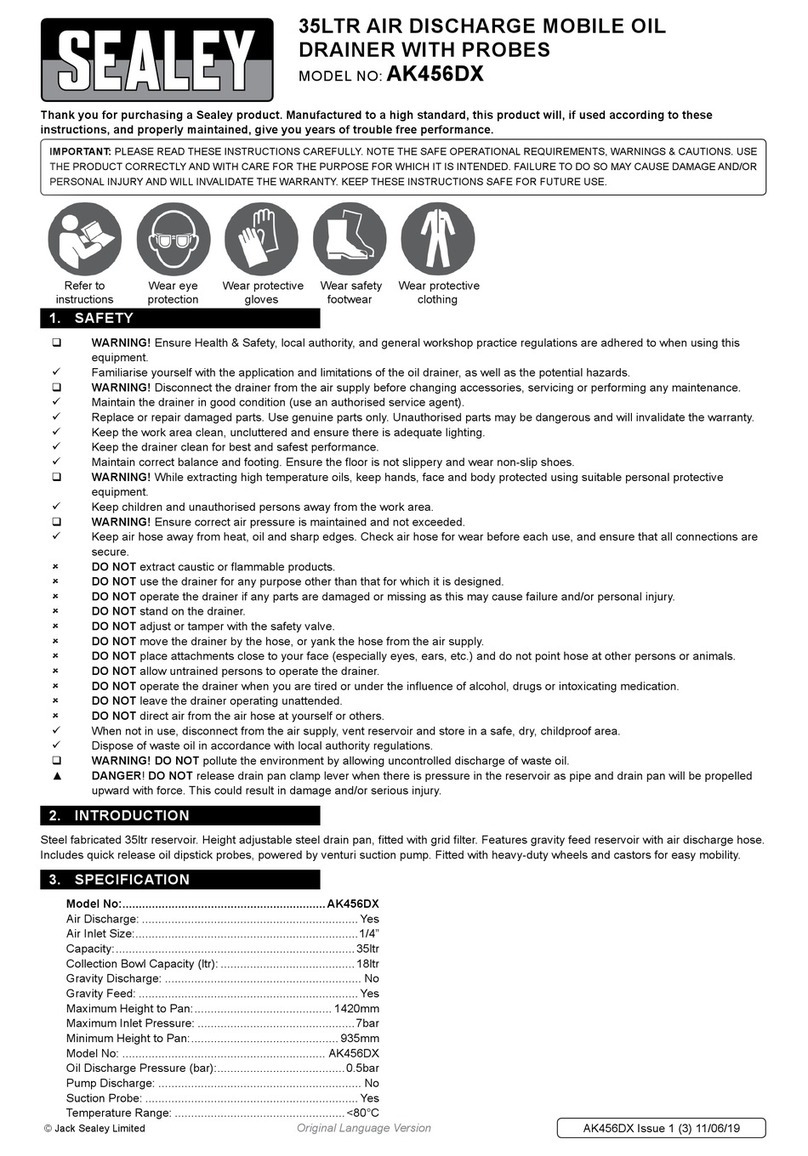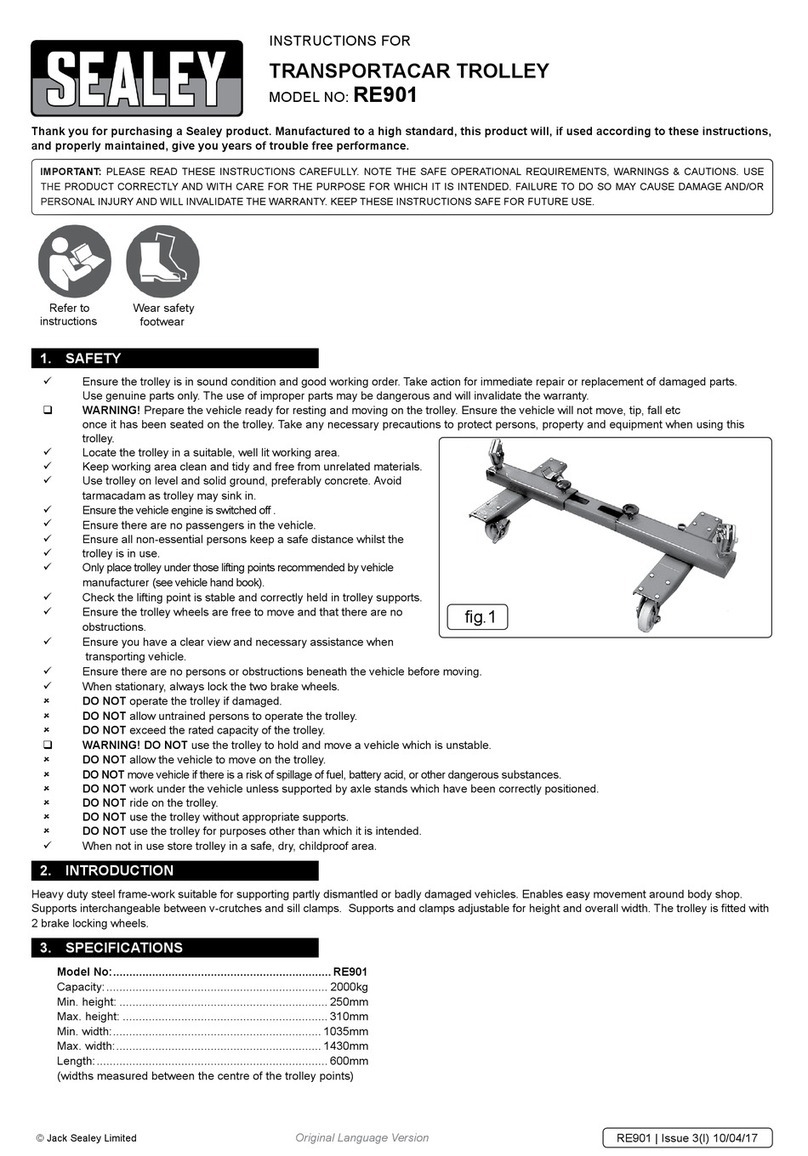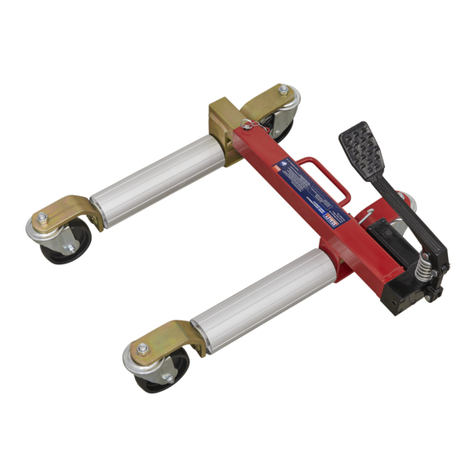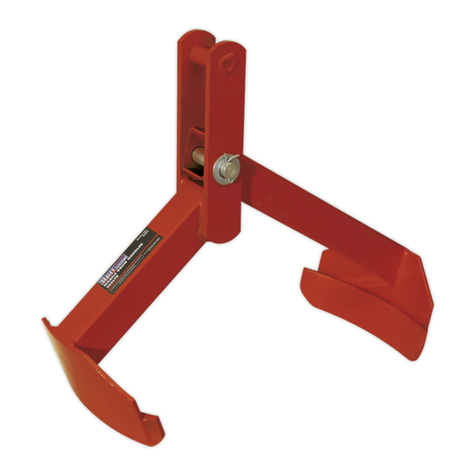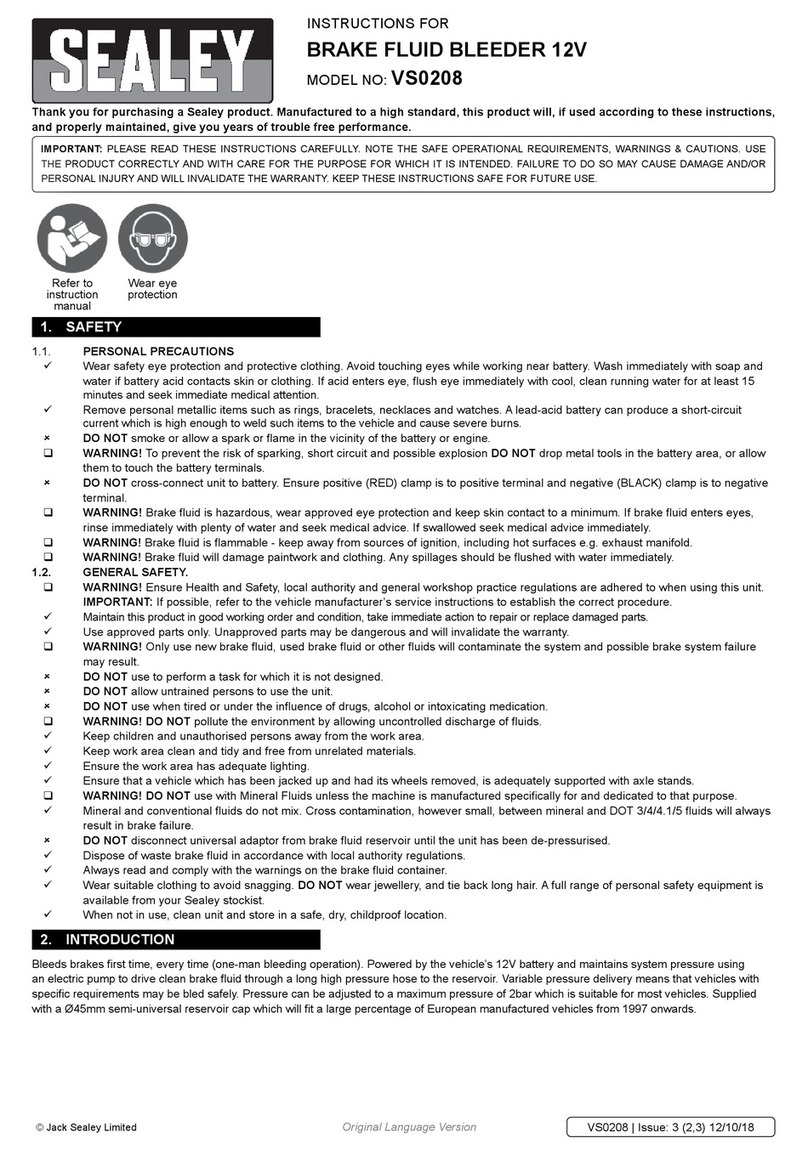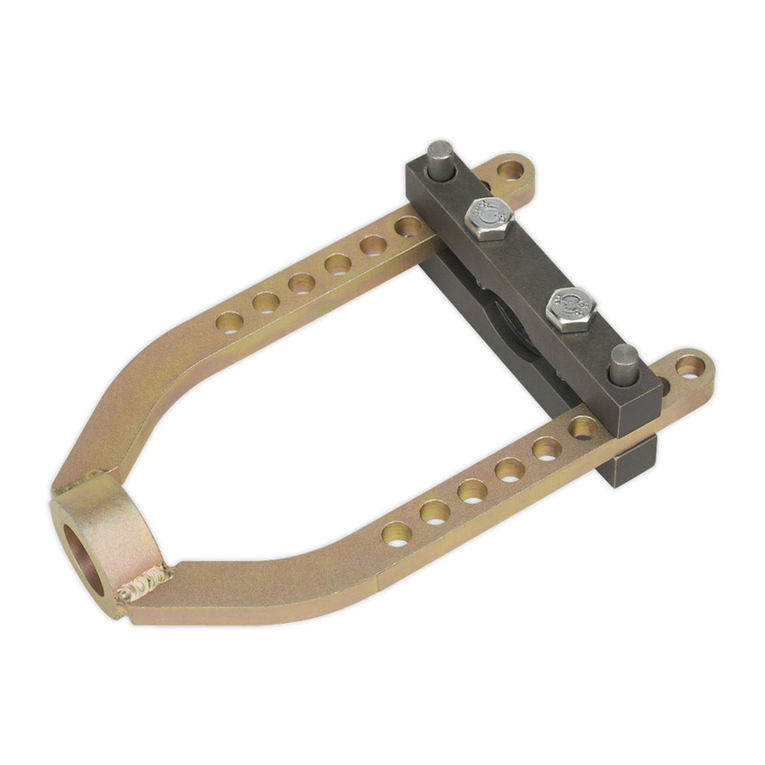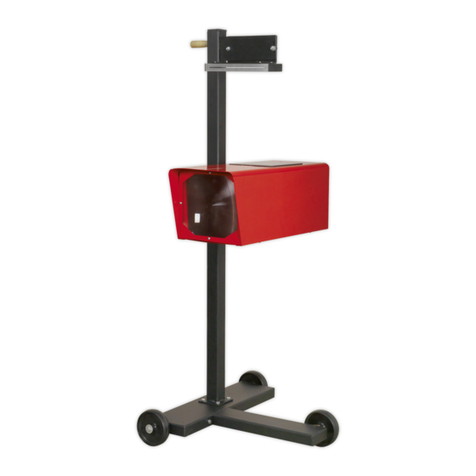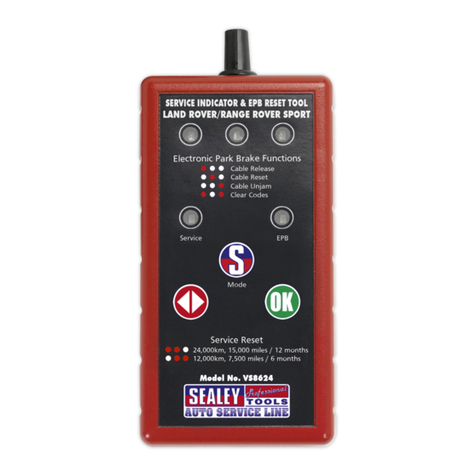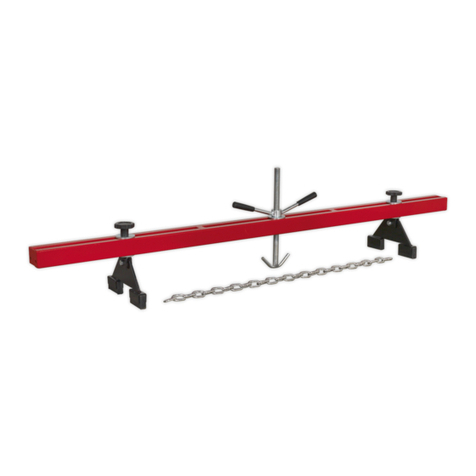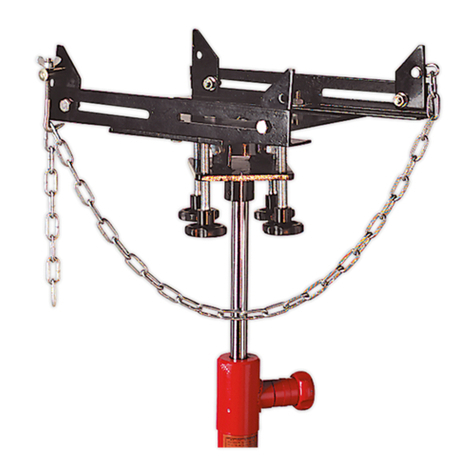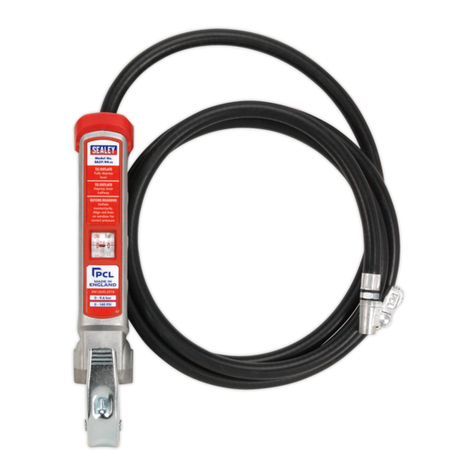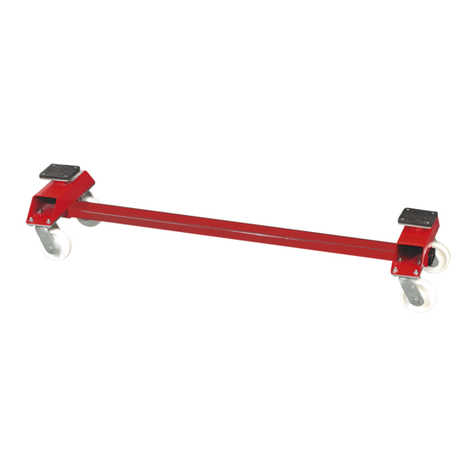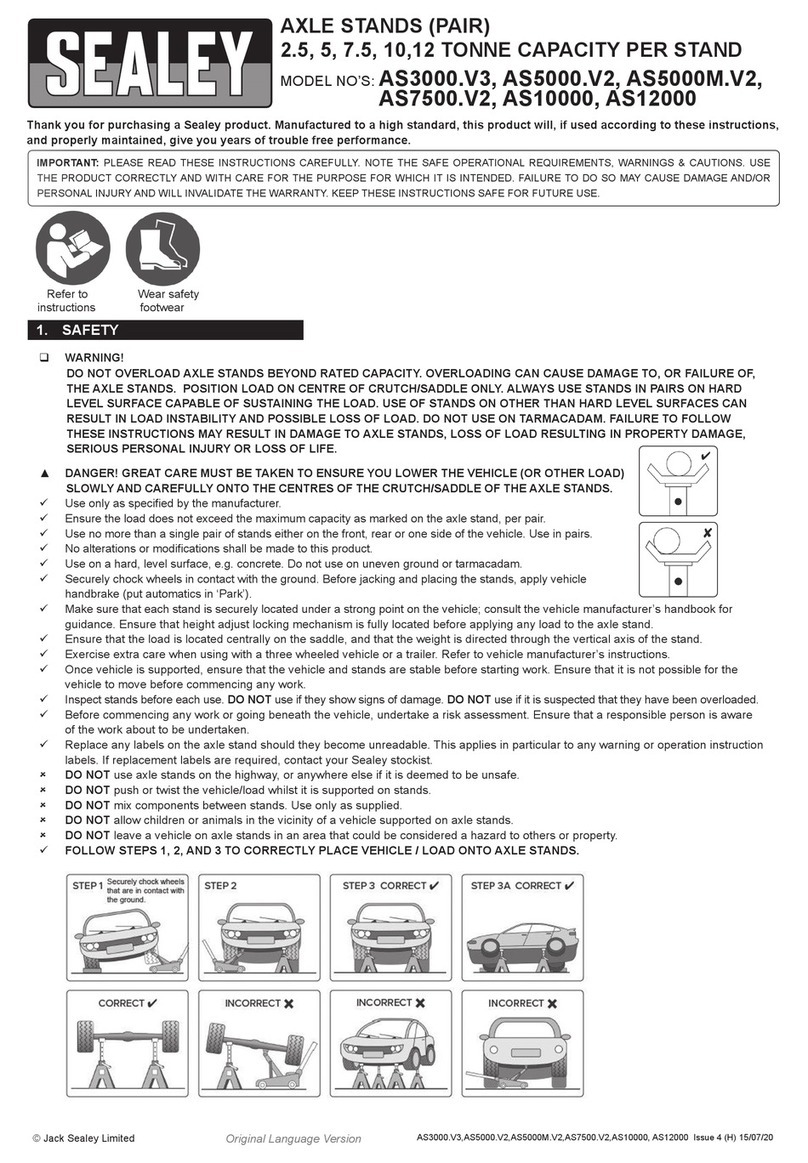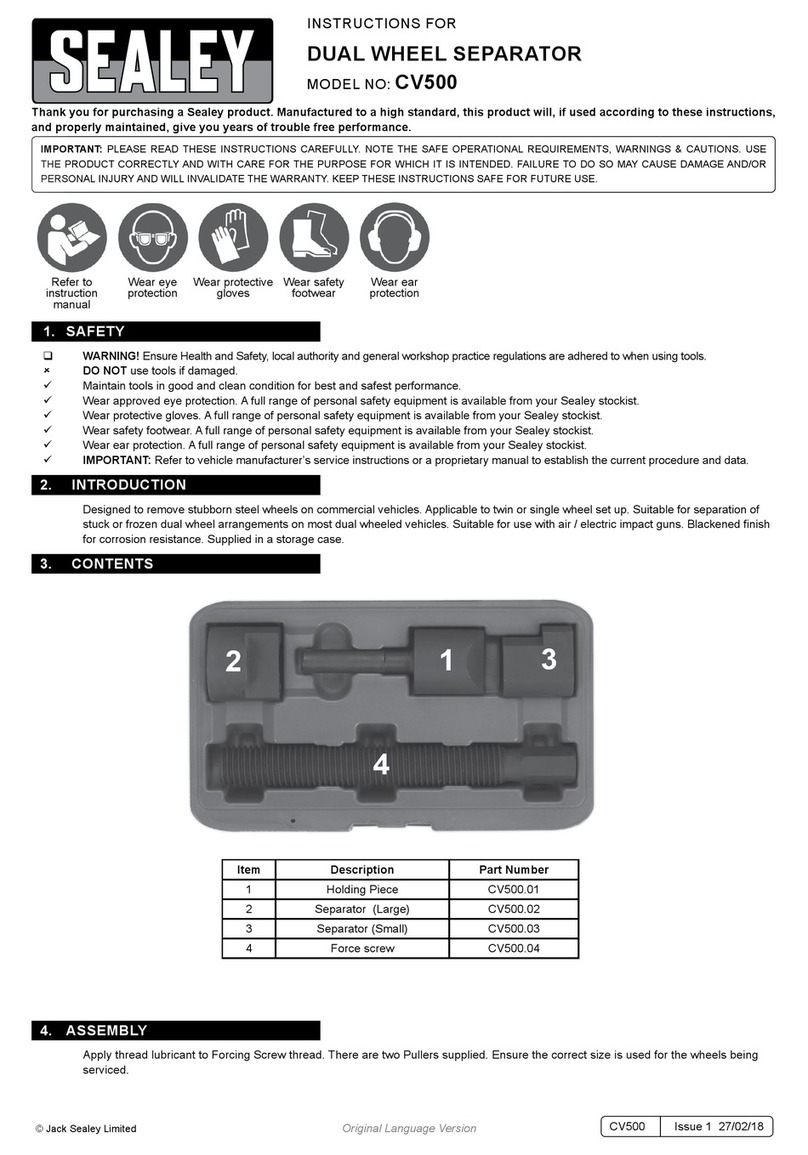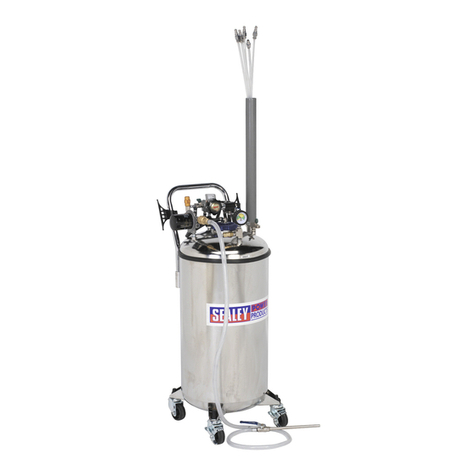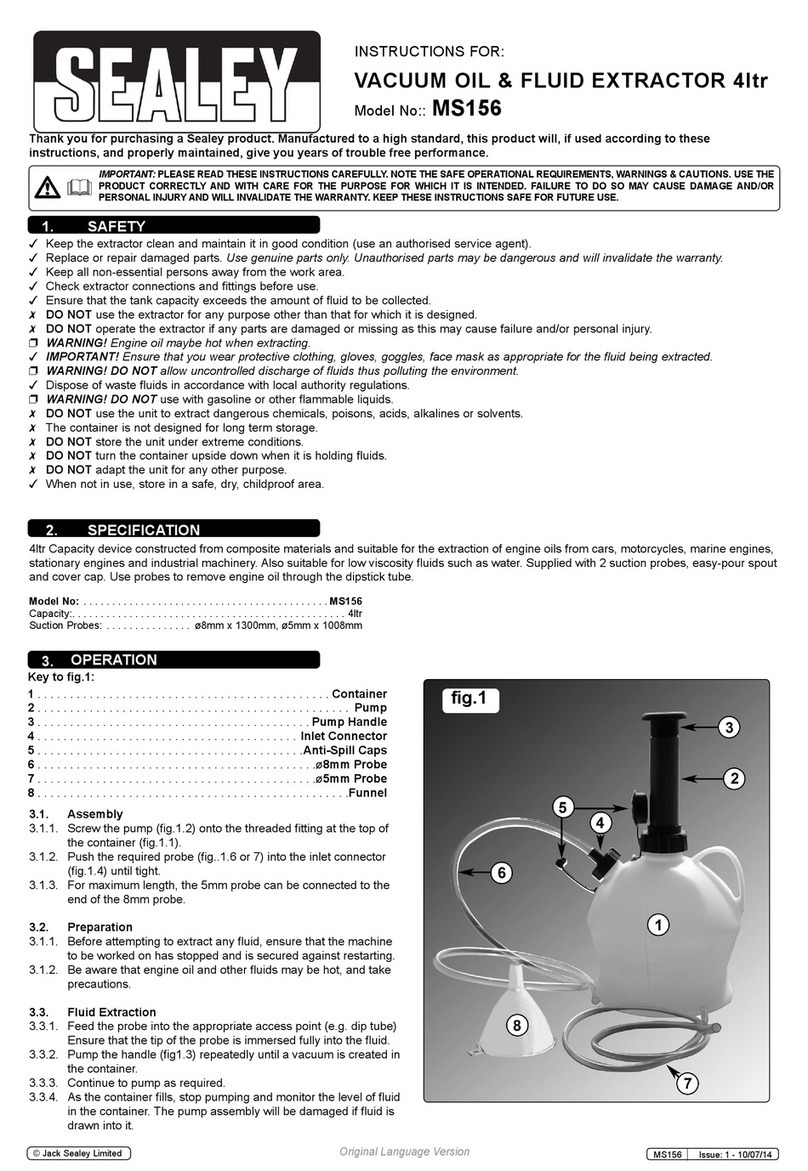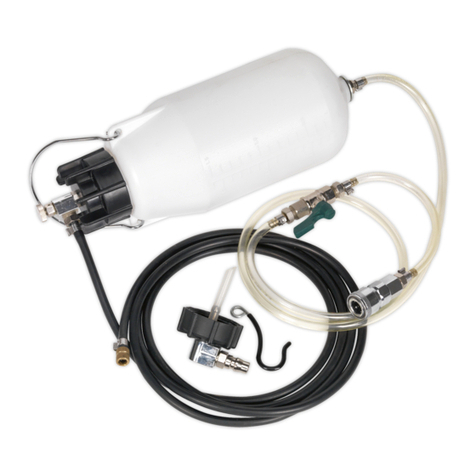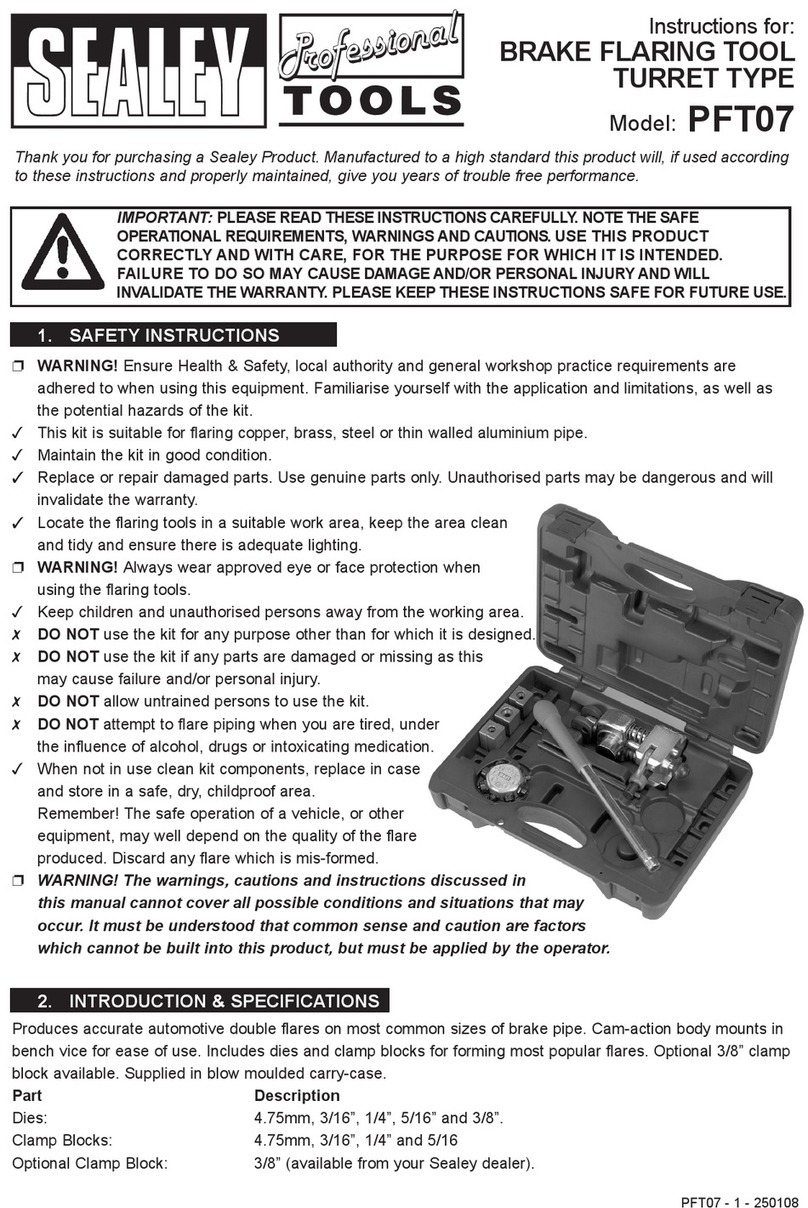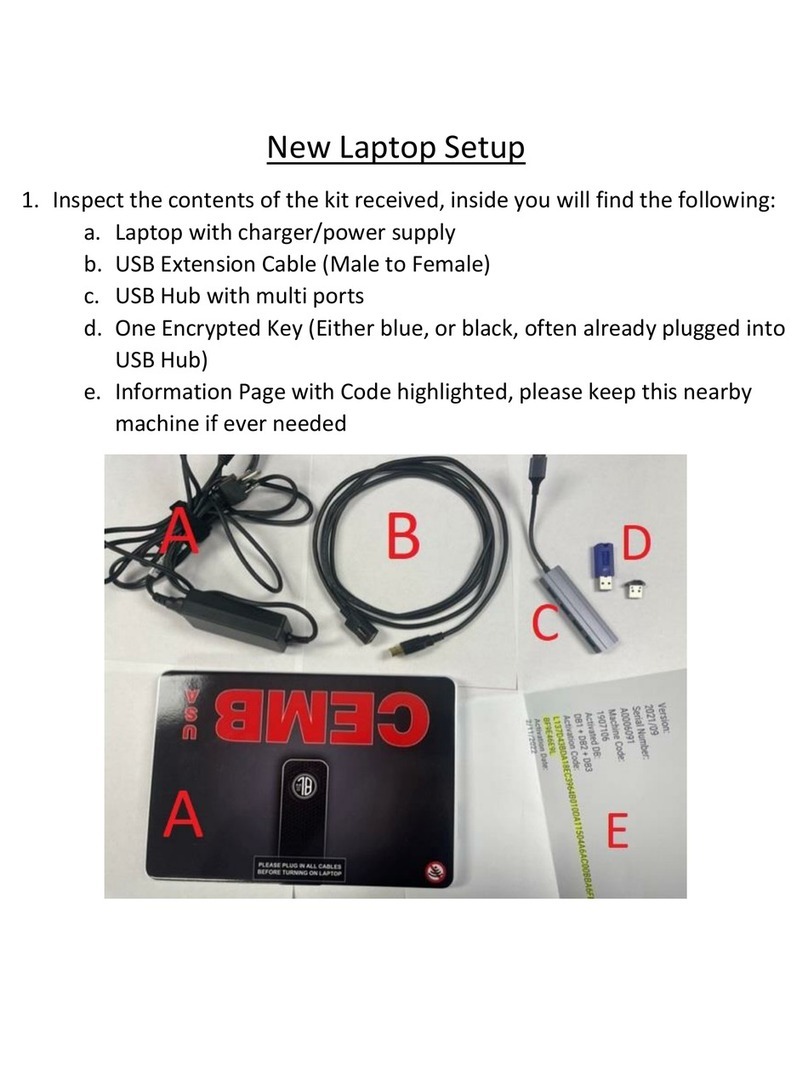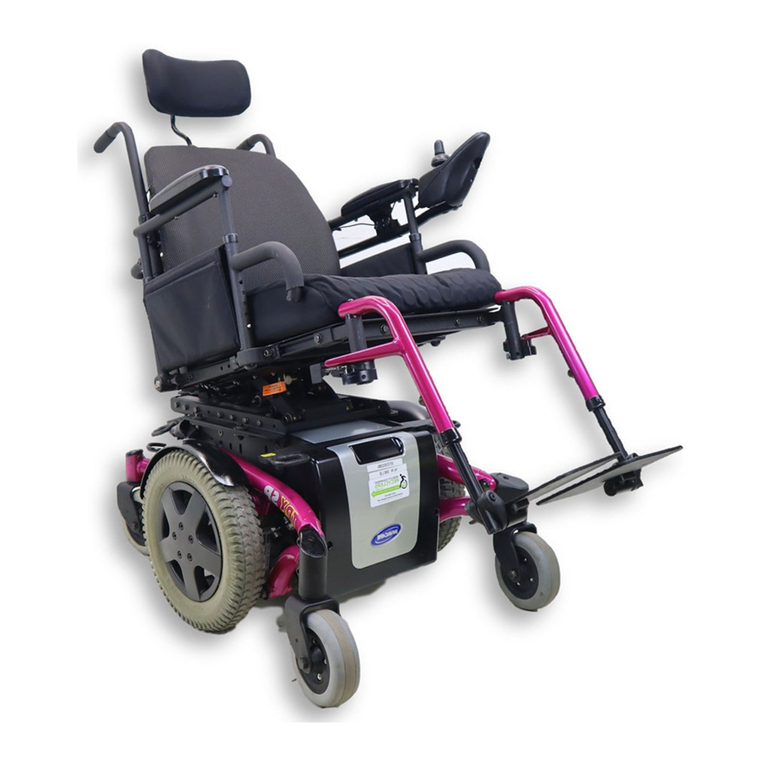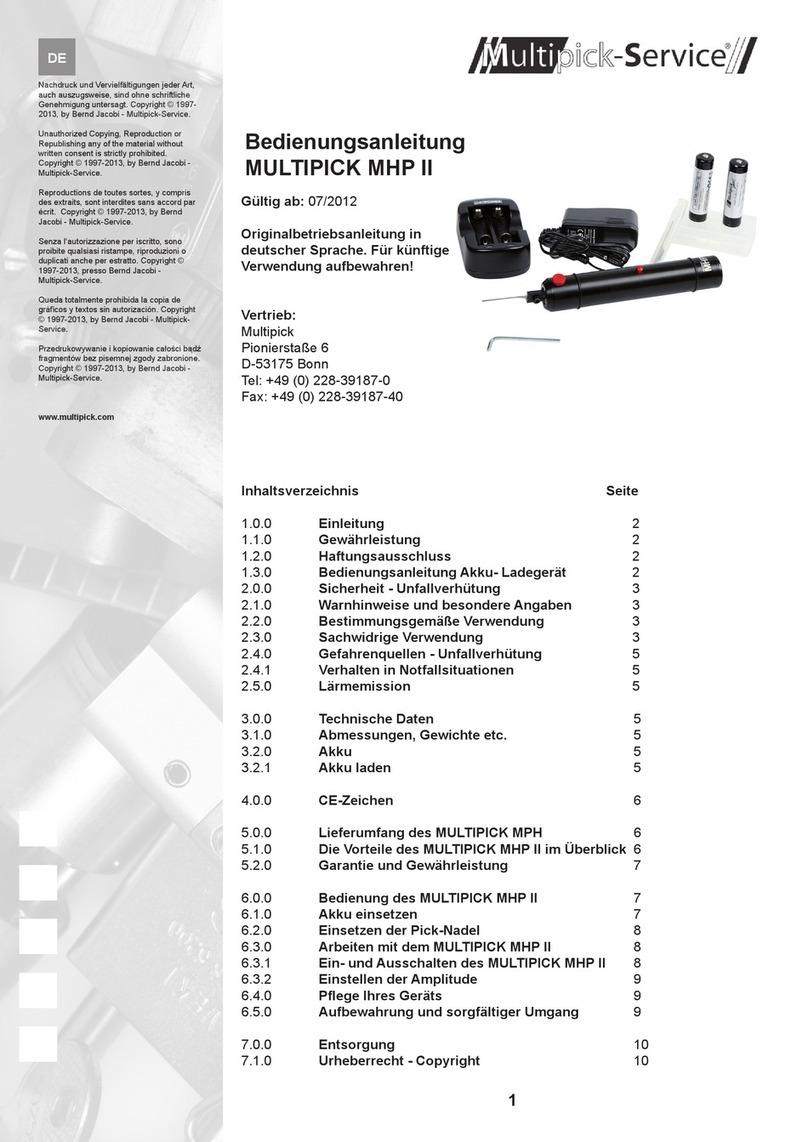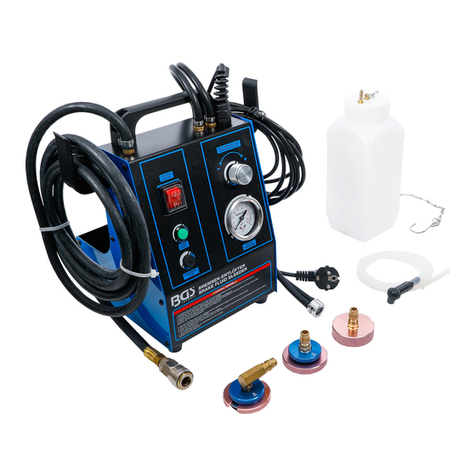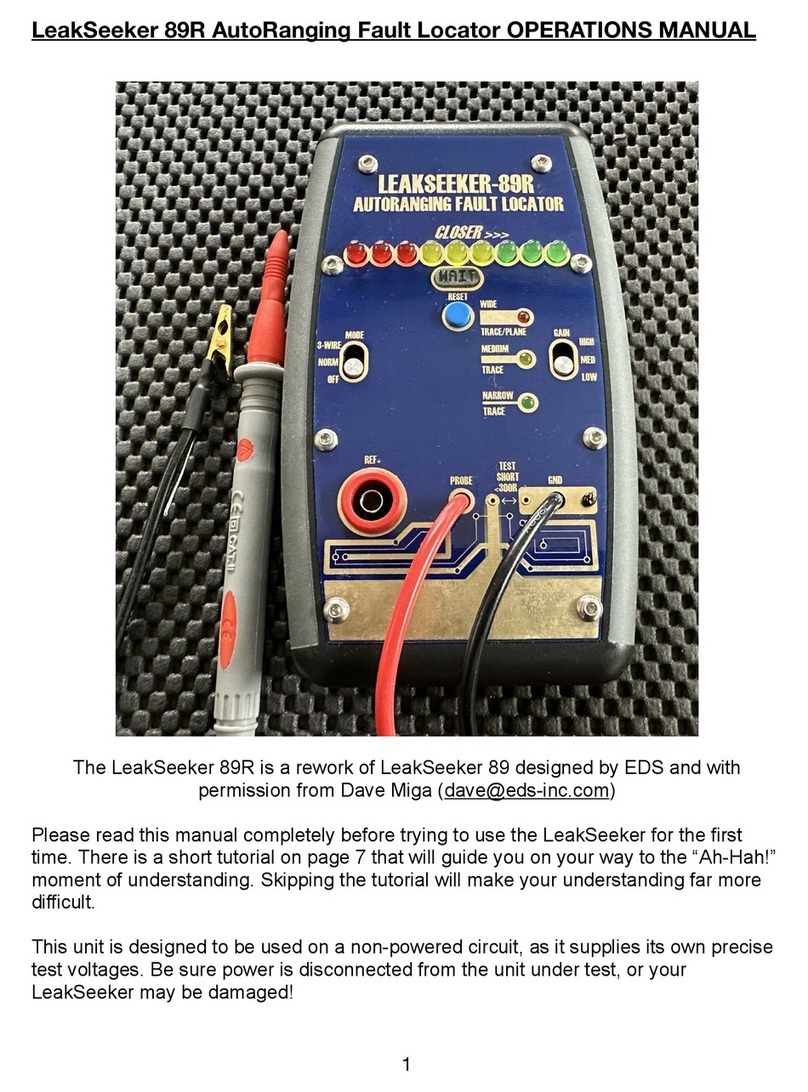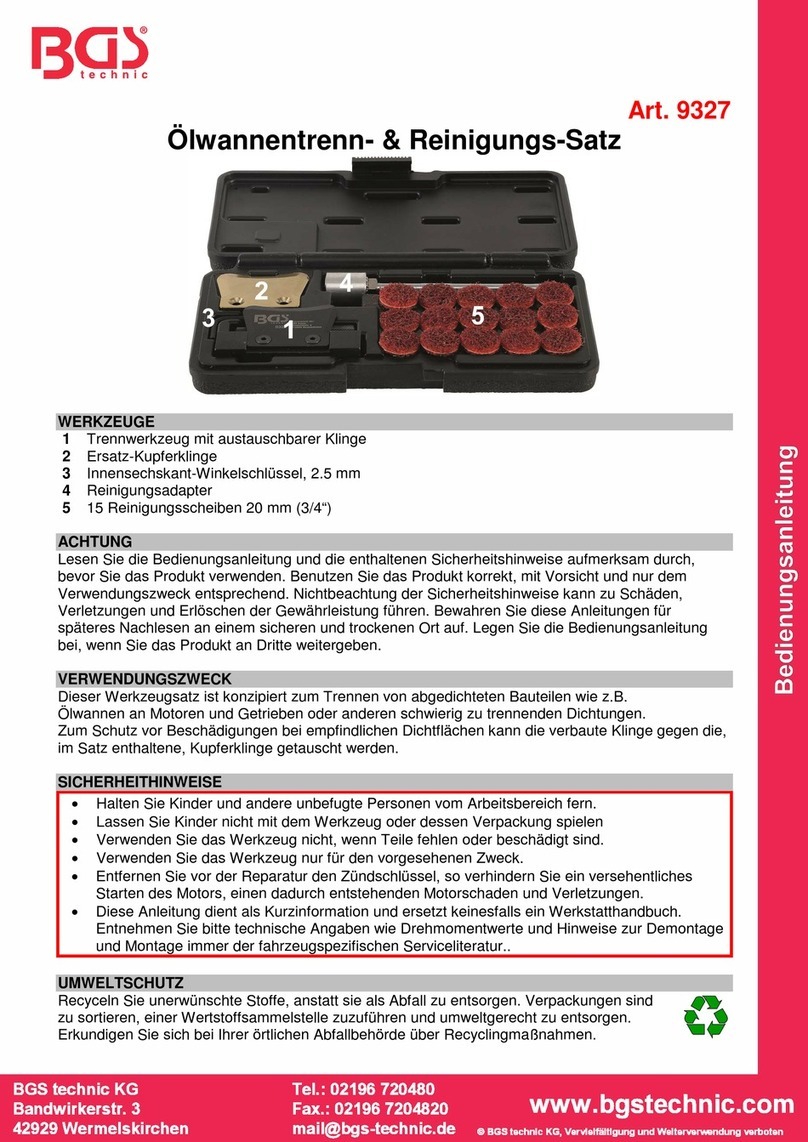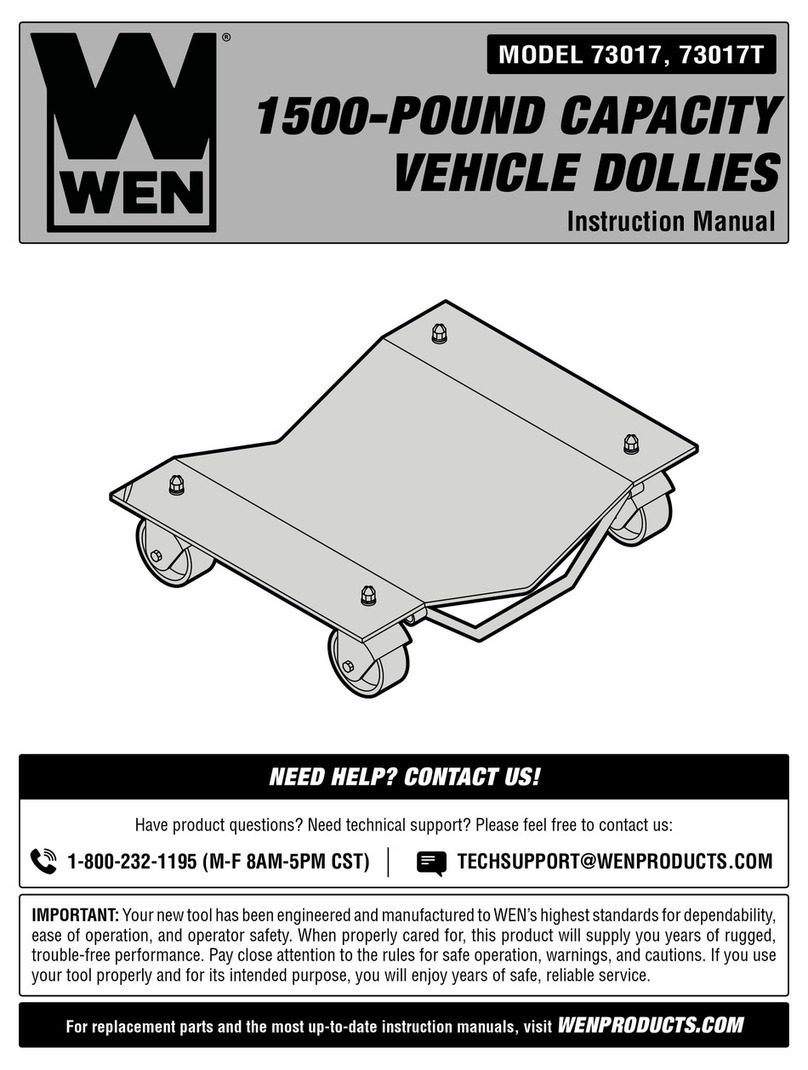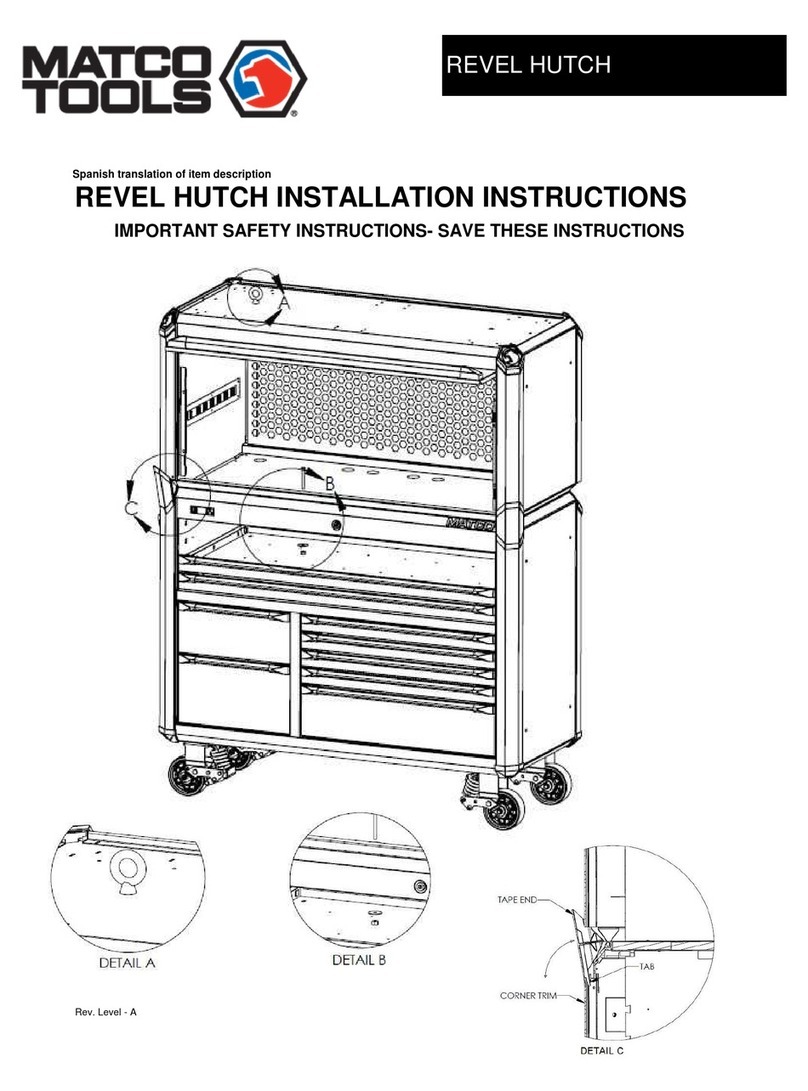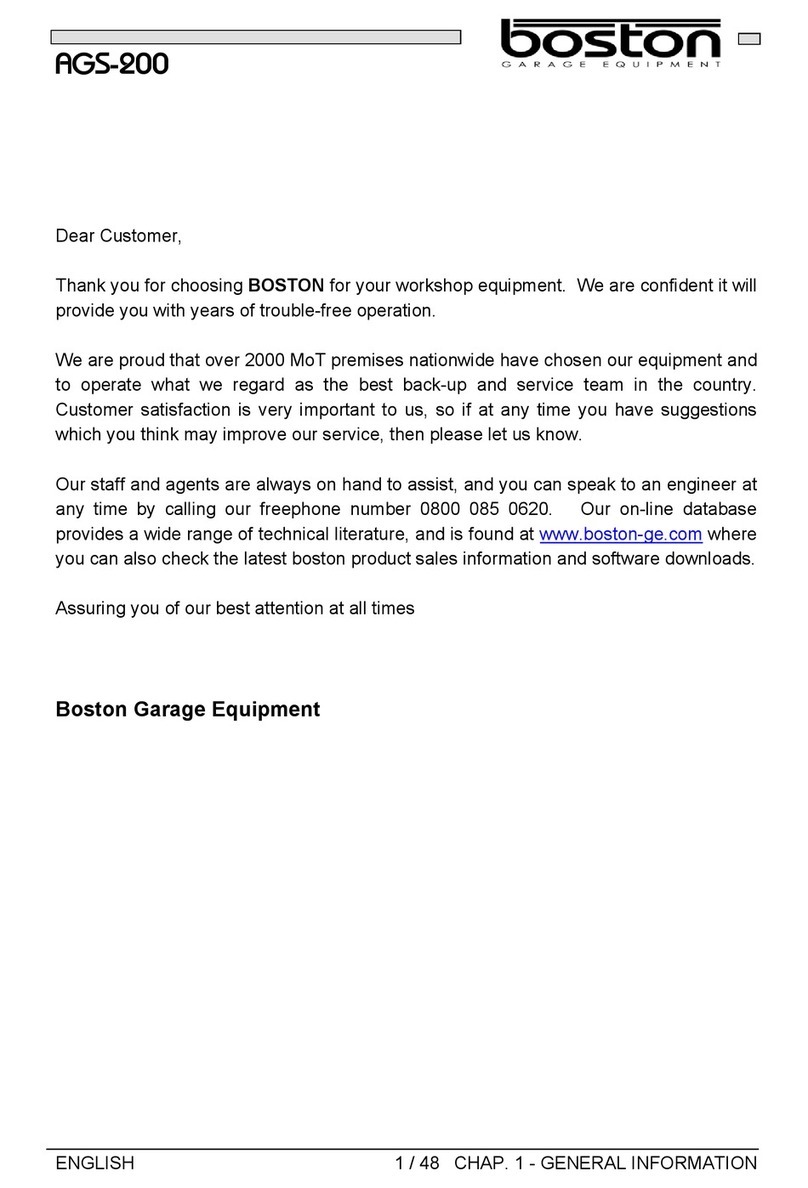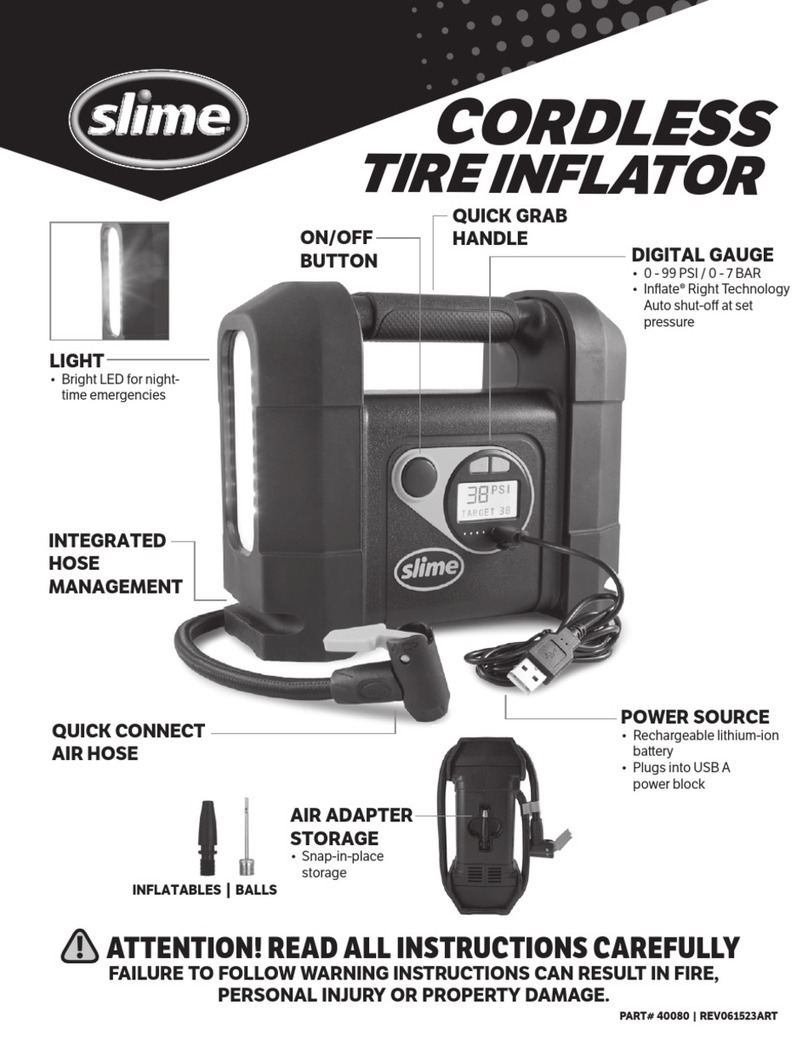
INSTRUCTIONS FOR:
PALLET TRUCKS
MODEL No: PT1150.V2 & PT1220.V2
Thank you for purchasing a Sealey product. Manufactured to a high standard this product will, if used according to these instructions
and properly maintained, give you years of trouble free performance.
1. SAFETY INSTRUCTIONS
IMPORTANT: PLEASE READ THESE INSTRUCTIONS CAREFULLY. NOTE THE SAFE OPERATIONAL REQUIREMENTS, WARNINGS & CAUTIONS.
USE THE PRODUCT CORRECTLY AND WITH CARE FOR THE PURPOSE FOR WHICH IT IS INTENDED. FAILURE TO DO SO MAY CAUSE
DAMAGE AND/OR PERSONAL INJURY AND WILL INVALIDATE THE WARRANTY. PLEASE KEEP INSTRUCTIONS SAFE FOR FUTURE USE.
2. INTRODUCTION & SPECIFICATION
DO NOT use a faulty or damaged truck.
Before using the truck all parts and working mechanisms should
be checked for wear or damage. Pay particular attention to the
wheels, handle and fork lifting and lowering mechanism. Any
parts found to be worn, damaged or suspect should be repaired
or replaced before the truck is used.
All repairs must be carried out by an authorised Sealey service
agent.
Personnel who operate the truck and those in the vicinity of
operation should wear safety shoes with reinforced toe caps at all
times.
Never place any part of your body in the lifting mechanism or
under the forks or load.
DO NOT allow others to ride on the truck.
DO NOT lift or move unstable or loosely stacked loads.
Take special care when moving long, high or wide loads in order
not to dislodge the load by striking any architectural features,
permanent fixtures, vehicles or people in the area of operation.
Always ensure that the load is evenly distributed across the forks
with the centre of the load being at the halfway point of the length
of the forks.
Do not overload the truck - refer to the specification for maximum
permitted load.
If a load is left unattended even for a very short period of time it
should be lowered to the ground.
When not in use the truck should be left in the lowered position.
Ensure that the width and length of the forks is correct for the
pallet to be lifted.
Ensure that the truck is sufficiently inserted into the pallet to lift
the full depth of the pallet.
Use the truck on level, flat, hard surfaces.
DO NOT use truck on sloping or uneven ground and do not
attempt to negotiate curbs, steps or ramps.
The operator of the truck must be physically capable of controlling
the load selected; particularly in relation to stopping a rolling load.
When the truck is not in use, lower the forks and park the truck
where it will not be a hazard.
3. ASSEMBLY
Introduction. Heavy-duty trucks suitable for warehouse and general
handling duties. Polyurethane, non-marking wheels and tandem
loading rollers with sealed-for-life bearings all-round. Hydraulic unit
with chromed ram and piston for resistance to corrosion. Single
bogey wheels with drop nose for smooth pallet entry.
Specification.
Model No. ....................................... PT1150.V2 ...............PT1220.V2
Capacity................................................. 2500kg .....................2500kg
Minimum height ....................................... 85mm .......................85mm
Maximum height ................................... 200mm ......................200mm
Fork Length ......................................... 1150mm ...................1220mm
Width over Forks ................................... 540mm.................. 685 mm
Fork Spread........................................... 230mm ......................365mm
roll pin will lie in the groove made for it in the pump casting.
3.3 Using a hammer, insert the pivot pin (5) through both
components from right to left. Once the pivot pin is in
position, drive another roll pin through the hole in the other
end of the pivot pin.
3.4 Move the lever control at the top of the handle into it's highest
position and hold it there.
3.5 Referring to the inset cross section in fig.1, Insert the chain (2)
with adjusting bolt (6) and nut (8) attached through the hole in
the centre of the pivot pin.
3.6 There is a transit pin just below the main handle pivot which
needs to be removed. Lower the handle down so that the
rolling sleeve (3) bears down on top of the piston and remove
the transit pin.
3.7 Move the lever control at the top of the handle into it's lowest
position. Then raise the rocking lever plate (7) which sits within
the main casting and move the chain adjusting bolt (6) into the
slot in the end of the plate so that the adjusting nut (8) is now
underneath the plate as shown on the inset cross section in fig.1.
3.1 Identify the handle pivot pin (5) and tap a roll pin (9) through
one end of it so that it sticks out equally either side.
3.2 Position yourself behind the truck and insert the handle
assembly into the pump casting (see fig.1). Align the pivot
holes at the base of the handle with the pivot holes in the
casting. Take the pivot pin and orientate it so that the inserted
4. ADJUSTMENTS
4.1 The control lever (see fig.2) has three positions as follows:-
RAISE - Lever in lowest position.
DRIVE - Lever in centre position.
LOWER - Lever held in up position. When released the lever
returns to the drive position.
4.2 If the lever does not work in the prescribed way it can be
adjusted using the nut (8) at the bottom of the adjusting rod
(6) which is attached to the chain (2). See fig.1.
4.3 If the truck elevates whilst pumping in the Drive position, turn
the adjusting nut clockwise until the pumping action no longer
raises the truck and the Drive functions correctly.
Original Language Version
fig.1
PT1150.V2 & PT1220.V2 Issue No.1 - 00/00/00

